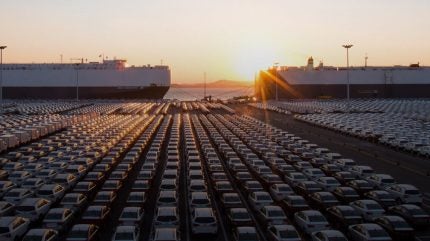
Hyundai Motor Group’s (HMG) executive chairman, Chung Euisun, recently visited the US to join the leaders of several other major South Korean chaebols and support the South Korean government’s renewed efforts to negotiate better access to the world’s largest economy.

Discover B2B Marketing That Performs
Combine business intelligence and editorial excellence to reach engaged professionals across 36 leading media platforms.
A similar mission in August failed to change the US Trump administration’s decision to impose a 25% import duty on South Korean imports, while duties on imports from Japan and the EU were recently set at 15%, and at 10% for the UK. This has created a significant disadvantage for South Korean companies operating in the US market.
HMG’s Hyundai Motor and Kia Corporation, and GM Korea, are estimated to have exported a combined 1.6 million vehicles to the US last year, worth around US$ 38 billion. Hyundai and Kia together sold around 1.7 million vehicles in the US in 2024, with shipments from South Korea amounting to 1.145 million units, while GM Korea’s US exports are understood to have amounted to a further 425,000 units.
Despite the toughening trade conditions, Hyundai Motor Group’s sales in the US increased by over 10% to 1.37 million vehicles in the first nine months of 2025. Imports from South Korea dropped by almost 7% to 736,000 units in this period, as the group stepped up local sourcing. The company’s new 300,000 unit/year vehicle assembly plant in Savannah, in the US state of Georgia, became operational around this time last year, with production yet to be fully ramped up.
Key sticking points in the South Korea-US bilateral trade negotiations include US access to some key South Korean markets and South Korea’s failure to convince the US that it will follow through on its stated commitment to investing US$ 350 billion in US manufacturing. At the last count, around US$ 150-200 billion had been committed to actual investment projects.
HMG recently announced that it planned to raise its investments in the US from US$ 21 billion to US$ 26 billion, including expanding capacity at its new Savannah plant to 500,000 vehicles per year by 2028 and strengthening the US manufacturing operations of Hyundai Steel.
Ironically, a raid in September by US immigration authorities on the construction site of HMG’s new electric vehicle (EV) battery manufacturing joint venture with South Korea’s LG Energy Solution (LGES), in the US state of Georgia, is expected to delay completion of the investment by at least three months. A total of around 300 specialist automotive industry personnel employed to install advanced manufacturing facilities and equipment at the plant were repatriated back to South Korea last month.
Slower than expected growth in battery electric vehicle (BEV) demand in the US has also forced all automakers, including HMG, to review their production strategies in the US. At the end of September, the US government scrapped the EV tax incentives introduced by the previous Biden administration under the Inflation Reduction Act (IRA).
HMG is now focused on producing more hybrid vehicles, with its Georgia plant now designated to produce both hybrid and BEVs, instead of just BEVs as was originally planned. South Korean electric vehicle (EV) battery manufacturers have also had to revise their investment plans, with LGES and SK On Company having already added lithium iron phosphate (LFP) battery cells to their production operations at the expense of nickel, cobalt, and manganese (NCM) cell production, which are more commonly used in EV batteries, to focus more on the energy storage systems (ESS) market.
In response to the imposition of import tariffs by the US, and also due to the withdrawal of EV tax incentives, Hyundai and Kia have begun to raise the prices of some key models in the US market. Hyundai recently raised the sticker price on the 2026 battery-powered Ioniq 5 SUV model in the US by as much as US$9,800, mainly to compensate for the loss of IRA tax incentives. Significant price increases have also been announced for other 2026 models.
But Hyundai and Kia are unlikely to be able to pass on all of their cost increases and incentive cuts to consumers in the US. An industry analyst told reporters that “if they lose price competitiveness, their strong growth momentum in the US market will come to an end. They have no choice but to increase local production and maintain price ranges, despite the unfavorable regulatory environment under the Donald Trump administration.”






